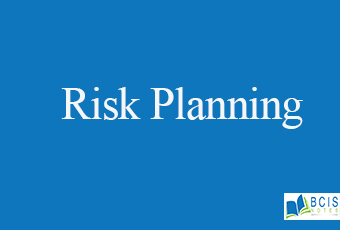
Risk Planning
Risk planning means preparing a strategy to deal with each of the risks identified. In other words, Risk Planning is a process for identifying how to carry out the activities of project risk management. Its purpose is to determine actions to efficiently respond to the identified risks that have a positive or/and negative effect on at least one project objective (such as cost, scope, performance, time).
Classes of strategies:
- Avoidance strategies.
- Minimization strategies.
- Contingency strategies.
Avoidance strategies
- Risk avoidance is the elimination of hazards, activities, and exposures that can negatively affect an organization’s assets.
- Whereas risk management aims to control the damages and financial consequences of threatening events, risk avoidance seeks to avoid compromising events entirely.
Minimization strategies
- Risk Minimization Planning.
- The primary goal of a Risk Minimization Plan is to develop activities that help patients and health care providers understand an important known or potential risk associated with a drug and to lessen the chance that a serious side effect might occur.
Contingency strategies
- Planning is important for every aspect of life. It is crucial for a business because it can be great for preventing risks.
- In simple words, contingency plans are backup plans that businesses activate only when a disaster or unforeseen situation disrupts the operations of the company or put their employees at risk.
You may also like The Problem Analysis Phase

Leave a Reply